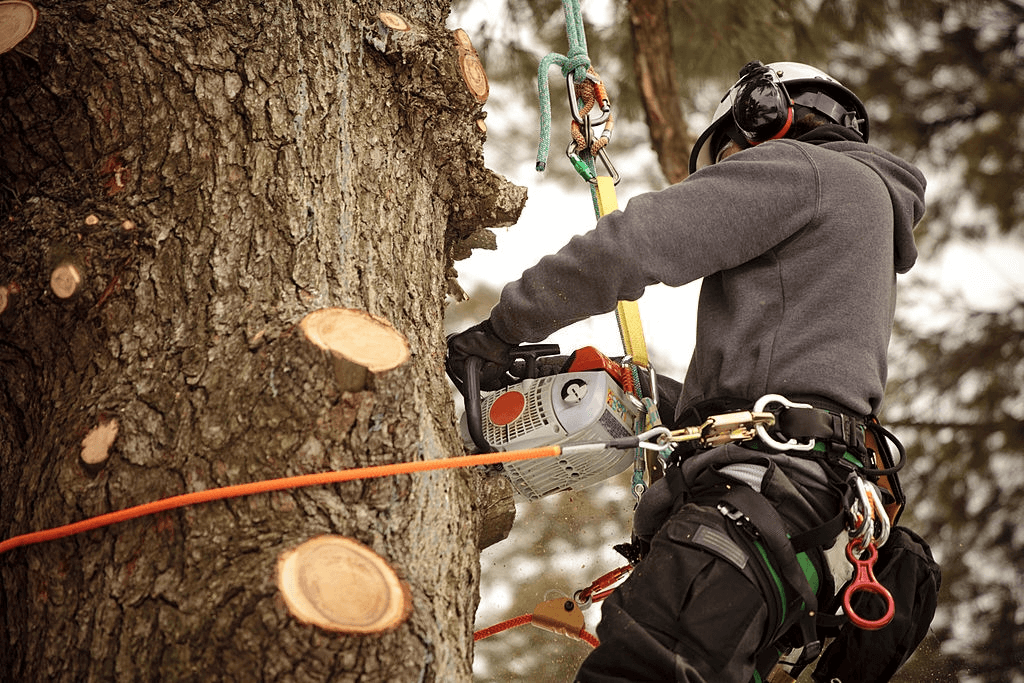Tree Trimming for a Safer Bloom
 Tree trimming should always be left to professionals who possess the skills, training, and effective tools to do a quick and safe job for you. This may involve pruning or simply sprucing up the landscape, but tree trimming is a necessity for not only your safety but the plant’s health and the natural aesthetic appeal of trees. You rely on the foliage on your property to add beauty to your property when the plants are in bloom for their flowers, fruits, nuts, and colors throughout the year. When the weather warms up, you enjoy the shade and the addition of a swing for your children when they aren’t trying to climb up among the branches. Or you use those same branches for your fall and winter holiday decorations. The plants on your property add beauty, floral fragrance to the air, and comfort in their shade. However, tree trimming is a necessity of their presentation, their health, or maintenance of their size if they are particularly huge or hanging over other structures on your property.
Tree trimming should always be left to professionals who possess the skills, training, and effective tools to do a quick and safe job for you. This may involve pruning or simply sprucing up the landscape, but tree trimming is a necessity for not only your safety but the plant’s health and the natural aesthetic appeal of trees. You rely on the foliage on your property to add beauty to your property when the plants are in bloom for their flowers, fruits, nuts, and colors throughout the year. When the weather warms up, you enjoy the shade and the addition of a swing for your children when they aren’t trying to climb up among the branches. Or you use those same branches for your fall and winter holiday decorations. The plants on your property add beauty, floral fragrance to the air, and comfort in their shade. However, tree trimming is a necessity of their presentation, their health, or maintenance of their size if they are particularly huge or hanging over other structures on your property.
Late dormant season, or late winter is the best time for tree trimming on your established trees. When the call the professionals in before spring growths, they are able to make the cuts that serve both your aesthetic shaping purposes and your safety concerns with play areas or property nearby. On one hand, when rouge branches lean against your windows, rest upon your roof, or are intertwined with nearby power lines, they pose a threat to the safety of your family and the construction of your home. You can prune above new buds to force the new growths in a particular direction, or you can opt for the permanent removal of large branches by having them cut above the stem tissue at the base of the branch. On the other hand, the pruning process is a necessity of plant and tree care. The process helps to control growth, promote growth or to remove deadening or damaged parts.
The three most prevalent types of pruning for the care and beauty of your trees and shrubs are known as crown thinning, crown raising, and crown reduction. They improve light penetration, walkway clearance, or height reduction, respectively. The tree experts that you choose will be able to recommend one or a variety of pruning techniques in order to improve conditions such as crowded branches, sucker growth, water sprouts, rubbing branches, and branch stubs.
In conclusion, homeowners as well as business owners, in a particularly green area, can seek tree trimming for aesthetic and safety reasons. First, aesthetic branch cutbacks are just a part of what adds to the health and foliage of the plants, for the best landscape appearance. It is a necessity to tidy up the appearance of all of the components of any outdoor living spaces or just complementary greenery to any property. Second, the safety cutback of the plant removes any dead, dying, damaged, or overgrown branches that can pose a threat to other persons or property. Regardless of the reasoning your seek pruning and sprucing up of the plant life on your property, as long as you select qualified professionals with a healthy dose of horticulture in their background, your plants will be in good hands.
